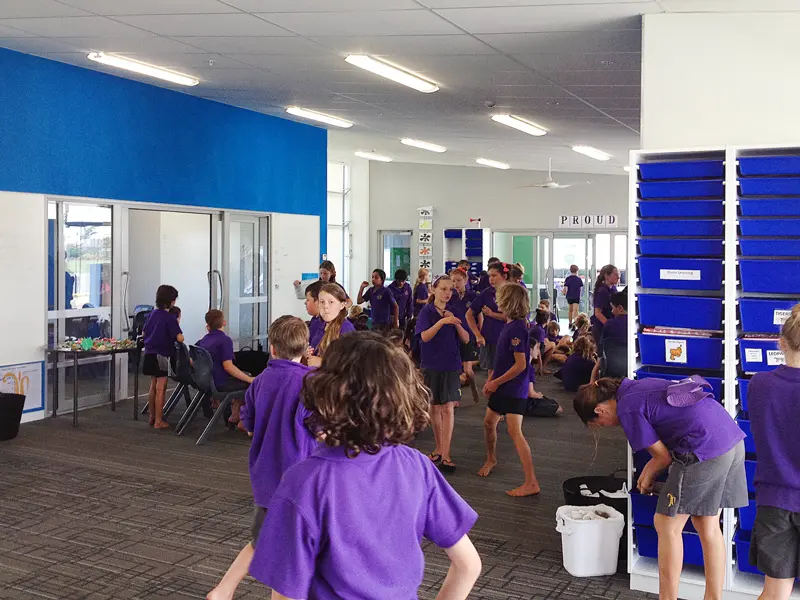Hydronic heating solutions have stood the test of time, proving to be an effective way to warm schools for centuries. Central Heating New Zealand takes great pride in collaborating closely with mechanical consultants and contractors to provide efficient heating systems to childcare facilities and schools nationwide. Our passion lies in creating comfortable environments, both within and beyond the boundaries of home.
Children spend a significant portion, up to 20-25% of their waking hours, at school or daycare before the age of 18. Hence, it becomes imperative to ensure that their learning environment is conducive to their growth and development. As schools adopt more open-plan layouts with students spending less time at traditional desks and more time on the floor, hydronic radiant heating solutions like underfloor heating have become increasingly popular.
In bustling learning spaces with constant traffic, radiant heating proves to be energy-efficient. By not directly heating the air, it allows doors and windows to remain open for proper ventilation while maintaining a comfortable atmosphere and ensuring that there are no drafts, noise, or cold spots.

In addition to underfloor heating, radiators provide an excellent supplementary option for spaces where greater control is necessary, such as offices or break-out areas. Hydronic radiators can be integrated into the same system that controls underfloor heating. By connecting them to a low-temperature air-to-water heat pump, the temperature delivered through the radiators remains ideal for such spaces without the need for additional safety considerations. For those connected to high-temperature heat sources like pellet boilers, we recommend installing our Low Surface Temperature radiators, ensuring safety for schools and similar projects.
With the growing focus on environmentally friendly heat sources, we are witnessing a transition from traditional fossil fuel-based systems to hydronic air-to-water heat pumps. Our experienced team of engineers excel in designing such spaces and gladly extends their support for implementing hydronic solutions. For suitable projects, we proudly offer our CHOFU heat pumps as a reliable heat source and are working toward offering more solutions in this space. In 2024, we are excited to introduce a commercial heat pump solution to cater to diverse needs.
In modern classrooms and this is especially true for early childcare and primary schools, it's evident that kids often sit or play on the floor. Thus, it is essential to implement systems like underfloor heating that ensure warmth and comfort at ground level.
We remain committed to fostering greener and more efficient heating solutions for schools while ensuring the safety and well-being of the students and staff. Together, let's embrace sustainable heating practices and create a brighter future for the next generation.
The Benefits of Hydronic Radiant Heating Over Traditional Forced Air Systems:
- Uniform Heating: Hydronic radiant heating provides even warmth across the entire floor surface, eliminating hot or cold spots. In contrast, forced air systems may create temperature disparities, leading to discomfort in certain areas.
- Silent Operation: Hydronic systems operate silently, as there are no fans or blowers generating noise. This creates a peaceful learning environment without any distracting background sounds, which can be common in forced air systems.
- Healthier Air Quality: Radiant heating does not circulate air, reducing the distribution of dust, allergens, and pollutants within the indoor environment. This can greatly benefit students with respiratory sensitivities or allergies.
- Energy Efficiency: Hydronic radiant heating is known for its energy efficiency, as it uses water to transport heat, which retains warmth for more extended periods. In contrast, forced air systems lose heat through ductwork and may require frequent on/off cycles to maintain temperatures.
- Durability and Longevity: Hydronic systems have fewer mechanical parts and no ductwork, reducing the risk of wear and tear. As a result, they tend to have longer lifespans and require less frequent maintenance than forced air systems.
- Design Flexibility: Radiant heating systems can be installed beneath various types of flooring, such as tile, wood, or carpet, offering more design freedom in creating comfortable and aesthetically pleasing learning spaces.
- No Air Drafts: Unlike forced air systems, which can cause air drafts as they blow heated air into the room, hydronic radiant heating maintains a gentle and steady flow of warmth without any noticeable drafts.
Please contact us for more information on the solutions we can provide to suit your projects. We also have a library of case studies online and a list of some of the projects where we have provided heating solutions in schools.
View Hydronic Solutions for Education Centres SheetContact Us






